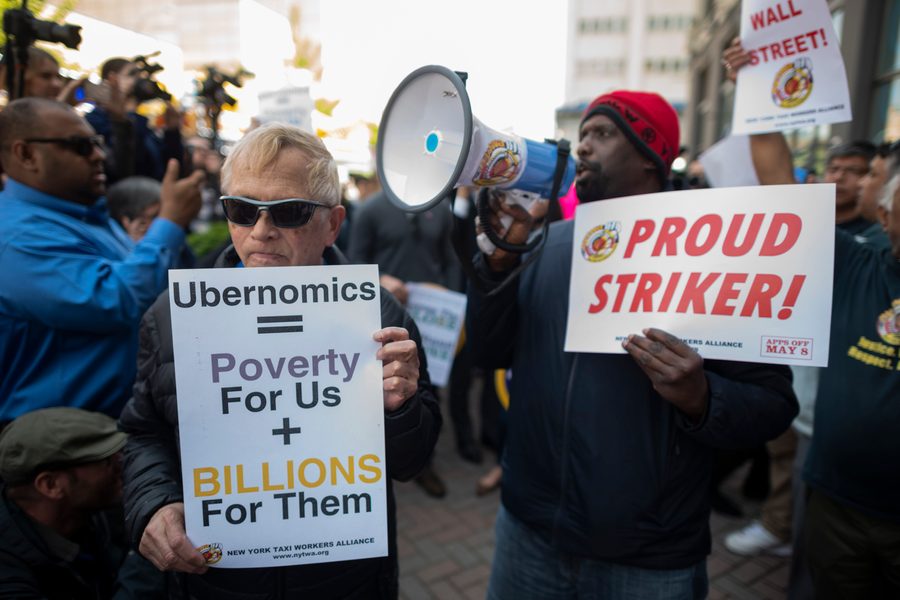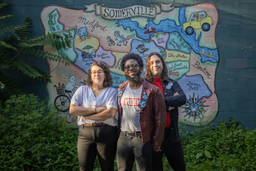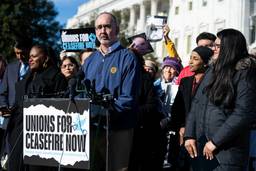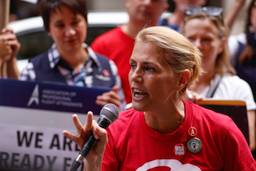
It was back in 2015 that Obama administration alum David Plouffe, freshly decamped to Silicon Valley, first suggested that the gig economy was “the future of work.”
On-demand platforms like Uber will continue to grow, Plouffe declared, because they’ve found a new means to offer workers something they desperately need: an easy way to make a quick buck in a tough economy. While Uber wasn’t providing healthcare or overtime pay to its drivers — deemed “partners” by the company — it offered them flexibility.
“When you look at the full picture of how people are truly using these platforms and seizing these economic opportunities,” wrote Plouffe in a Medium post, “it’s clear that this is much more of an opportunity to be seized than a problem to be solved.”
“The future of work” soon became the phrase that launched a thousand conference panels. Even though gig workers comprise no more than one percent of the U.S. workforce, according to the latest estimates, Silicon Valley has attempted to propagate the myth that we have entered a brave new world where the old rules no longer apply — those rules being basic labor protections and collective bargaining rights.
But the defining feature of the gig economy has never been workers accepting jobs through an app on their phone: it’s that they work with no benefits, no job security and no unions. And it’s this model of the future, in which workers are more fully fungible, that is being promoted not only by tech acolytes, but also by traditional employers and the American Right.
A March report from the National Employment Law Project (NELP) details how hotel chains Marriott and Hilton, as well as the right-wing American Legislative Exchange Council and the Cato Institute, have thrown their weight behind “a far-reaching, multi-million-dollar influence campaign” to rewrite worker classification standards at every level of government.
As the NELP report explains, “Gig companies are simply using new-fangled methods of labor mediation to extract rents from workers, and shift risks and costs onto workers, consumers, and the general public.”
Yet despite all this effort, rideshare drivers nationwide took a page out of the labor movement’s playbook on Wednesday and went on strike.
Kathrine Federova, who drives for both Uber and Lyft, has actually been on strike three times as a member of Chicago Rideshare Advocates. As a full-time accounting student, Federova says she does appreciate the flexibility the platforms provide. “But lots of people need flexibility in their jobs for lots of reasons, and Uber and Lyft take advantage of that,” she told In These Times.
Chicago Rideshare Advocates, a worker-run group organized primarily through social media, has organized a handful of labor actions in recent years, and first began planning Wednesday’s strike in coordination with a similar group in Los Angeles. Through driver Facebook groups, as well as a widely shared tweet from presidential candidate Bernie Sanders, the coordinated action spread to dozens of major cities.
Drivers were already angry about a declining share of fees, unpredictable surge pricing and deactivations. But Uber’s statements ahead of their $90 billion initial public offering (IPO) — set to begin trading on Friday — incensed them further. In filings with the SEC, the company wrote that “we expect driver dissatisfaction will generally increase” as it removes incentives “to improve our financial performance” and keep returns for investors healthy.
“Drivers are talked [about as if they are] liabilities and not the actual heroes that built their empire,” Bhairavi Desai, founder of the New York Taxi Workers Alliance (NYTWA), told AM New York. “We’re sending a message that drivers need to come first.” Members of NYTWA, which organizes with both traditional taxi and rideshare drivers, went on strike Wednesday morning during early rush hour traffic from 7 a.m. to 9 a.m.
Uber said in a statement that it planned to hand out approximately $300 million in bonuses “to acknowledge Drivers who have participated in [its] success” ahead of the IPO.
But drivers say those bonuses of a few hundred dollars per person are a drop in the bucket. They also only apply to more senior drivers. Lyft awarded bonuses to drivers who have completed more than 10,000 rides. Barb Lloyd, another organizer of Chicago Rideshare Associates who has been driving for six years, says she has given more than 9,990 rides but got nothing.
Rideshare drivers began staging small strikes in 2014, and soon after, Silicon Valley stepped in to offer its own alternative to an actual union. In 2016, Uber announced that it would recognize and fund a “driver’s guild” affiliated with the International Association of Machinists and Aerospace Workers union.
Tellingly, the Koch Brothers-backed anti-union Mackinac Center also called the guild a “model that could pull the antiquated union model into the 21st century.” As Chris Brooks reported in a 2016 Labor Notes article, the association has no collective bargaining rights and promised not to instigate strikes among drivers in exchange for Uber’s blessing.
Instead of striking this week, the drivers’ guild announced that it would hold a rally in solidarity with striking workers. The guild also responded to a recent spate of driver suicides by launching a new “driver wellness” hotline and offering free counseling.
The benefits of this model pale in comparison to the groundbreaking wins secured by the NYTWA, which last year helped achieve the nation’s first minimum wage for Uber and Lyft drivers in New York City. Wednesday’s strike, and Uber and Lyft’s nervousness about the risk it poses to their profitability, further demonstrates that the ride share behemoths remain vulnerable to traditional labor organizing.
Uber is not, as its advocates frequently claim, a groundbreaking new employment model. In fact, it’s barely even a business model at all. As Doug Henwood recently detailed in Jacobin, the company is not profitable, and its entire plan for becoming so depends on continuing to reel in new investors while unraveling labor regulations and, perhaps eventually, cannibalizing the public transportation sector.
That’s an unsavory future, but, as Wednesday’s nationwide strike suggests, it can still be avoided through good, old-fashioned collective action.

I hope you found this article important. Before you leave, I want to ask you to consider supporting our work with a donation. In These Times needs readers like you to help sustain our mission. We don’t depend on—or want—corporate advertising or deep-pocketed billionaires to fund our journalism. We’re supported by you, the reader, so we can focus on covering the issues that matter most to the progressive movement without fear or compromise.
Our work isn’t hidden behind a paywall because of people like you who support our journalism. We want to keep it that way. If you value the work we do and the movements we cover, please consider donating to In These Times.
Rebecca Burns is an In These Times contributing editor and award-winning investigative reporter. Her work has appeared in Bloomberg, the Chicago Reader, ProPublica, The Intercept, and USA Today. Follow her on Twitter @rejburns.







